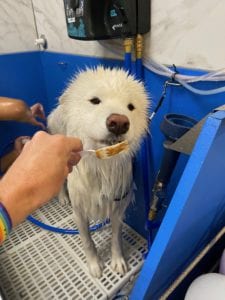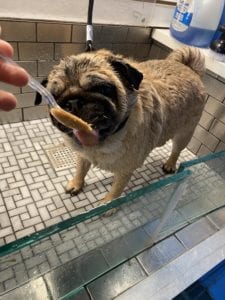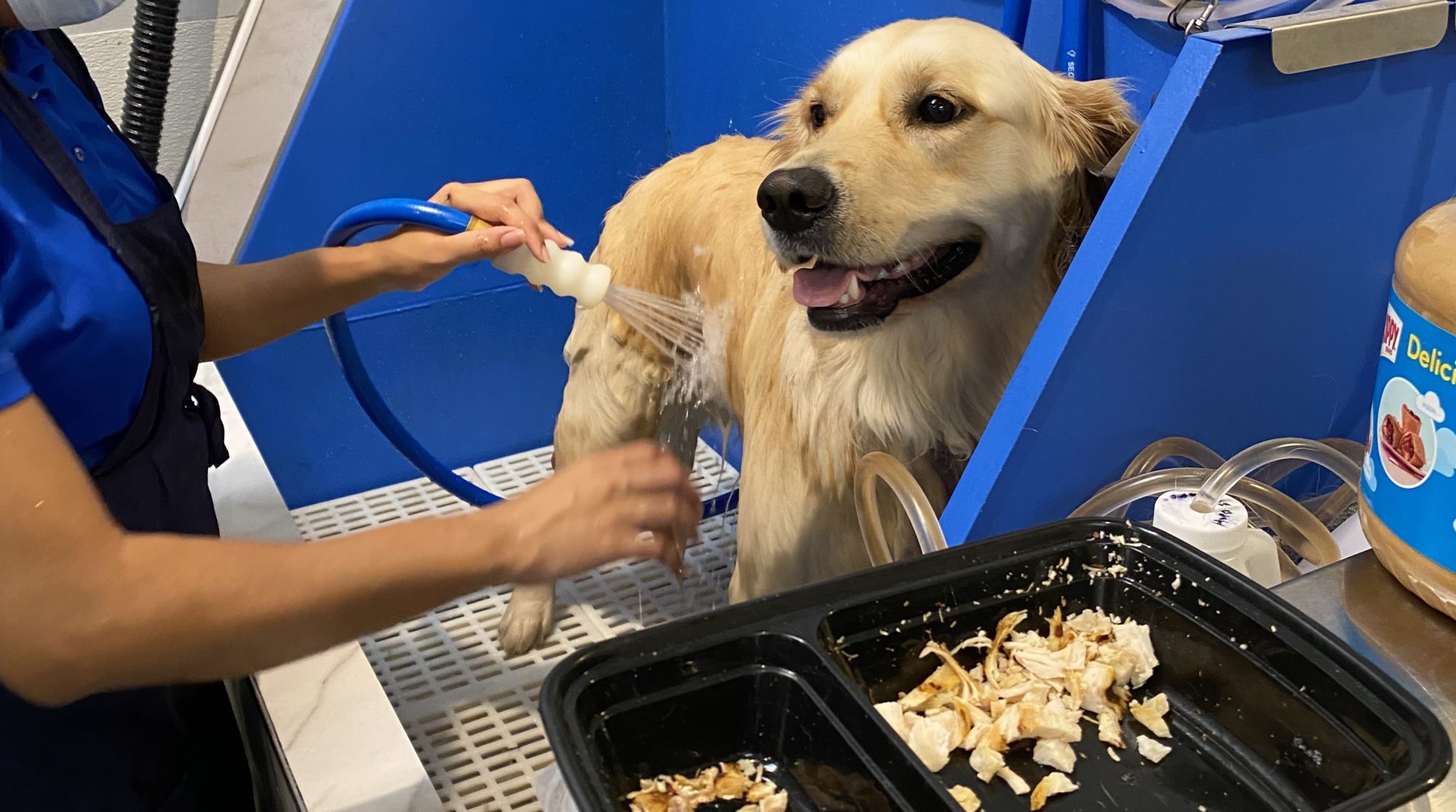
If you’ve read our blog post on Fear Free Grooming: A Compassionate Approach to an Essential Service, you already know how impactful fear-free grooming can be, but what does the process truly look like? Read on below to find out why our grooming services are unlike any other in the city.
The Fear Free Process
It all starts with a new customer questionnaire where we gather information about you, your dog, and the dog’s past grooming history. Based on the information we’ve gathered, we do an assessment appointment at our facility. If your dog truly has no fears or special needs, we groom them according to your instructions on the first visit. If upon visiting, your dog turns out to have specific or generalized fears about the grooming process, we’ll get as far as we can without fear, and strategize with you to come up with the next steps.
At our assessments, we generally find that there are three types of grooming dogs.
- Type 1: Completely well adjusted, calm, and patient dogs who show no signs of fear and enjoy the grooming process.
- Type 2: Dogs with mild to moderate, specific, or generalized fear about all or some part of the grooming process.
- Type 3: Dogs who have severe fears about some or multiple parts of the grooming process.
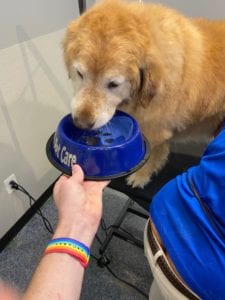
If Your Dog Is Type 1…
They’ll enjoy themselves and receive no special husbandry training beyond the regular care, love, and attention they need from us to complete your routine grooming request.
If Your Dog Is Type 2…
We’ll give you a full report of what phobias your dog has and how we were able to overcome them right then with fear-free practices, or how we believe we will be able to overcome them in two to three more visits in the regular salon/grooming setting to help them become Type 1.
If Your Dog Is Type 3…
We’ll give you a full report and recommend a husbandry training plan, along with an estimate of costs and timing involved to help your dog overcome its fears in a one-on-one private training setting. If everything goes according to plan, once they’ve completed the recommended program, your dog will approach grooming just like that of a Type 1 dog.
For more serious and fearful cases, the best way to explain how it works is with a human example:
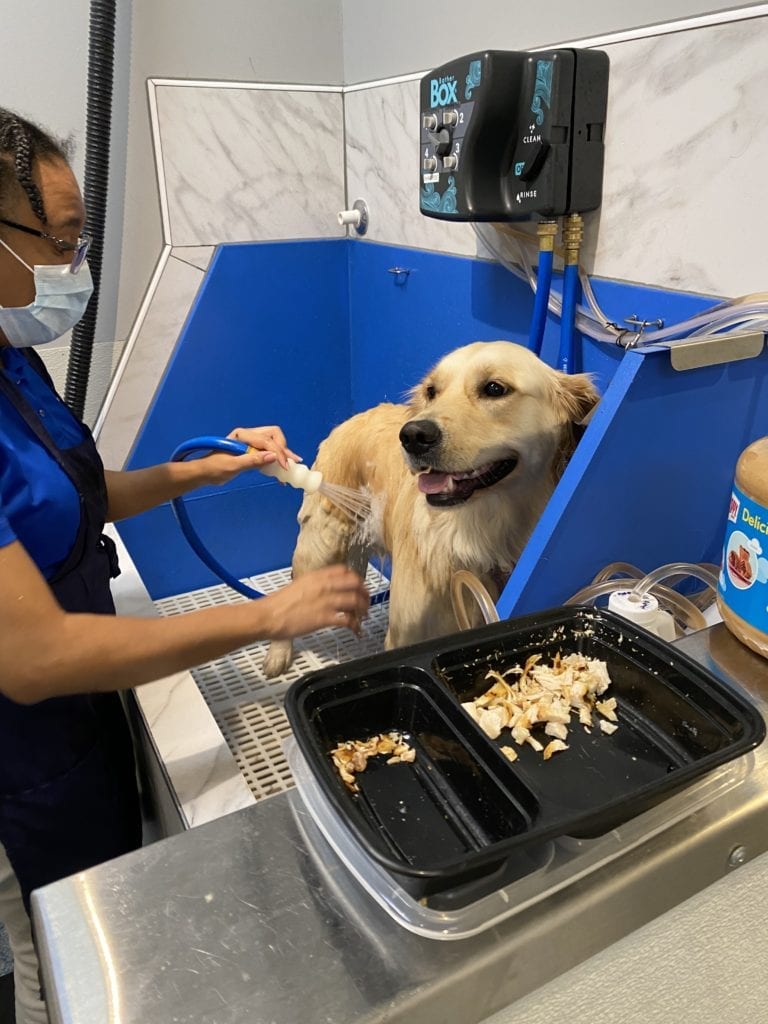
Do you know anyone who is afraid of heights? If someone is afraid of heights, it would be a terrible idea to do forced skydiving the first time you meet them. In addition to them experiencing fear of the activity, they could even associate you with that fear. Instead, you should start small. A fear-free approach might look a little something like this…
Start with a bag lunch at the entrance to Grand Canyon National Park, at the sign at the perimeter of the park, far away from the canyon itself. To sweeten the deal, it should be a very good bag lunch. Each time you mention something related to heights during your visit, you immediately give the person something they think is really tasty from lunch. After many such lunches, they begin to develop a positive association with heights.
A small number of dogs perceive grooming the same way a human who is afraid of heights would perceive forced skydiving. But, with time, patience, and classical conditioning, their fear can be overcome. Over time we typically see dogs who are fearful of the grooming process transform into dogs who are happy to be groomed.
What’s The Difference?
| Traditional Dog Grooming | Fear-Free Grooming | |
|---|---|---|
| 1 Person: 1 Dog | Staff Attention | Usually 2 People: 1 Dog |
| Not Fear Free Certified | Staff Certification | Fear Free Certified |
| May use extreme heat and/or unattended cage dryers | Equipment Used | No Cage Dryers |
| Standard | Restraints | Not Needed |
| ? | Treats | Fresh Grilled Chicken |
| Rushed | Timing | At The Dog’s Pace |
| ? | Rest, Water, Bathroom Breaks | Of Course |
| “Your dog did great!” | Customer Communication | Detailed Reports & Videos |
| Must Be Dragged Inside | The Dog’s Behavior | Pulls To Come Inside, Tail Wagging |
| ? | Results | Exceeds Expectations |
| Expensive | Price | Worth Every Penny |
| Worth a “Perfect” Haircut? | Overall | A Positive Experience |
Here are some questions we often hear from customers:
- What if my dog has no fears associated with grooming, can he still come to your facility? Of course! That’s our goal for all dogs, and we have many of them. All that means is that your dog will enjoy themselves as much as we enjoy having them.
- How long does the process take? We go at your dog’s pace. We ask all our dogs to be dropped off between 8-10am and plan to be picked up between 4-7pm. This gives us the flexibility to go at your dog’s pace and not rush, which is one of the things about the grooming process that often triggers fear. We’ll also let you know when your dog is done. If they’re done before 4pm and you want to pick them up early, you’re welcome to do so.
- Where will my dog be during the day? That depends on your dog and where they’re at in the fear-free process.
- Your dog will be in the same building as other dogs, but will not be in direct or unsupervised contact with any other dogs unless they are approved for Montessori school already, in which case they’ll be allowed to participate in supervised Montessori as appropriate. Our severely distressed or fearful grooming dogs come on a dedicated day when there are no other dogs in the salon.
- At some point in their day when not being groomed, most dogs will be in a nap condo. Rest, breaks, and a deliberately slow pace, are a critical component of the fear-free process. If a dog tells us that they need a break so as not to be pushed to fear, we give them one. We make a point to give them regular bathroom breaks as well. The nap condos have soft bedding and water at all times, and we also give the dogs puzzles and toys.
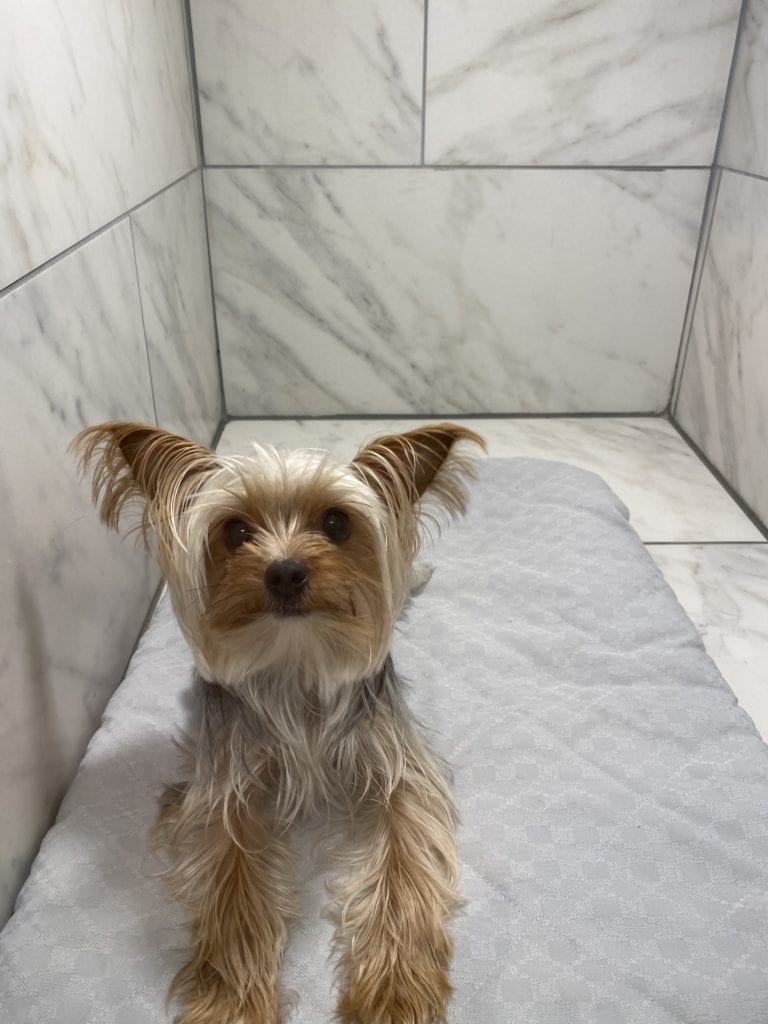
Nap Condo 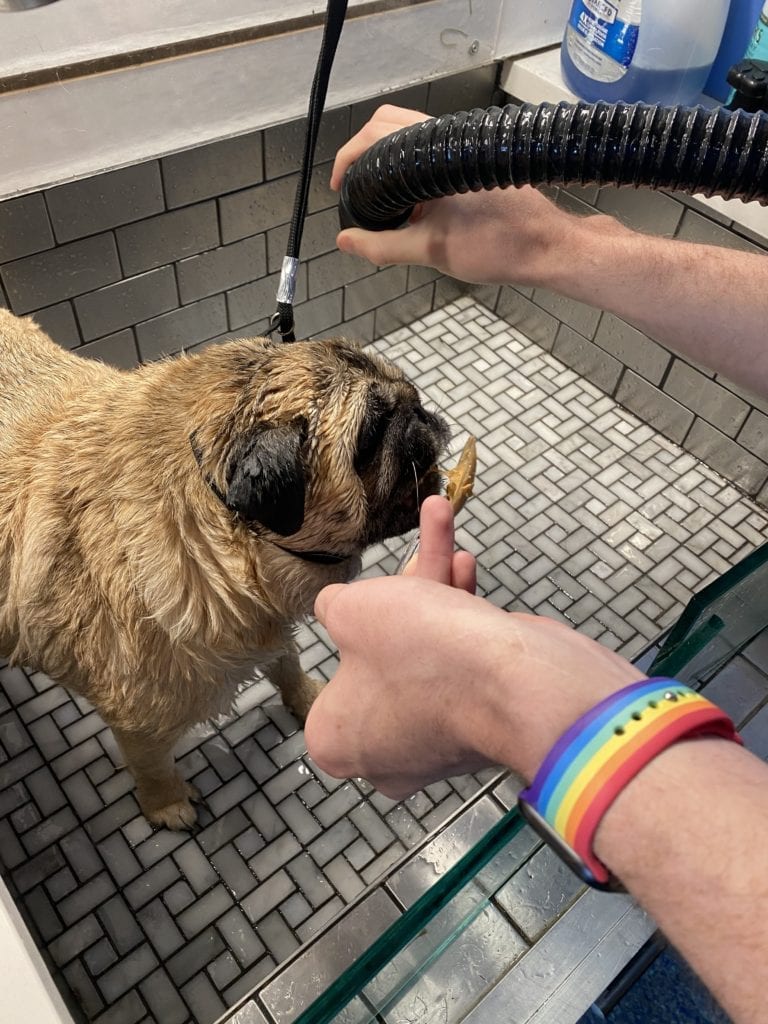
Enjoying Yummy Peanut Butter
- What if my dog has separation anxiety and can’t be kept in an enclosure? We have two options in that case:
- We have a “first dog of the day” slot each day and that dog can be groomed at its pace without ever being put into an enclosure. We can notify you the moment they’re done, assuming that your dog does not have any other fear-related issues with the grooming process and only has separation anxiety.
- If your dog has additional fears related to grooming on top of separation anxiety, or if you simply want your dog to overcome the separation anxiety too, we’d enroll them in Day Care 101 to overcome the separation anxiety before moving on to addressing the grooming fears.
- What if my dog has allergies? It is important you disclose that in advance, and we will take the necessary steps to avoid exposing your dog to the allergen during their visit.
- What if my dog has medical conditions? It is important you disclose that in advance. We’ll evaluate each dog on a case by case basis and as long as your dog is approved by a veterinarian to be groomed, we’ll work with you.
- Can I come with my dog to the grooming salon and stay for the appointment? No, but you’re welcoming to video chat with us for the entire process if you’d like.
- What if my dog is not treat or food motivated, or will not take food from strangers? That’s okay! There are many ways to motivate a dog and build confidence other than through the use of food.
- What if my dog is matted? That’s okay, too. But we do charge by the hour for humane de-matting. It can get expensive if the dog is severely matted.
- Do you use muzzles? We do not use muzzles as a matter of regular practice, but we are trained in their use. In some cases, particularly in one-on-one training for severely fearful dogs with known history, we may use a muzzle as a safety precaution. We always use basket muzzles which allow the dogs to breathe/pant, drink water, and eat freely.
- Do you use restraints? In general, no. We do use leashes to escort the dogs around the facility and we’ll use a groomer’s loop (which basically functions as a leash on the grooming table or in the bathtub) to give the dog a guide as to where they shouldn’t step for their own safety, but we don’t restrain the animals.
Do you have any additional questions that we haven’t addressed here? We love to help educate our clients on our best practices and techniques. Ask away!
Newsletter Signup
Get fear-free, force-free enrichment and training tips, adorable dog stories, the latest canine science, and more—all straight to your inbox!
"*" indicates required fields


